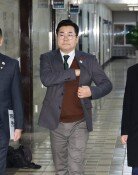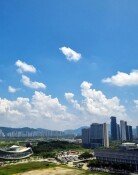‘Cheapflation’ widening inequality
‘Cheapflation’ widening inequality
Posted December. 25, 2024 07:46,
Updated December. 25, 2024 07:46
The term "cheapflation" has now emerged. It combines "cheap," meaning low-cost, with "inflation," referring to price increases. This describes the phenomenon where the prices of cheap goods rise more steeply than those of expensive goods. It's one of the economic effects seen in the wake of the COVID-19 pandemic. The Bank of Korea (BOK) analyzed the price changes of processed foods such as instant noodles and ham from January 2020 to September 2022. The analysis showed that prices of low-cost items rose by 16.4%, while prices of higher-end goods increased by only 5.6%.
The less income one has, the more likely they are to seek cheaper products. In this sense, inflation has been experienced unequally, exacerbated by cheapflation. In reality, the perceived inflation rate was higher for low-income groups than for high-income groups. Between Q4 2019 and Q3 2023, the BOK estimated that the cumulative real inflation rate for the bottom 20% of income earners was 13.0%, 1.3 percentage points higher than that for the top 20%. Furthermore, low-income households are more likely to expend greater effort to find cheaper products. When factoring in this "cost of effort,” the inflation burden on low-income groups becomes even greater.
Even by tightening their belts and filling their carts with cheaper goods, escaping poverty remains difficult for low-income households. This was confirmed in the nation's first-ever release of income mobility statistics just a week ago. According to Statistics Korea’s "Income Mobility Statistics," seven out of 10 individuals who were in the bottom 20% of income earners in 2021 remained there a year later. Looking back to 2017, three out of every 10 people remained in low-income status for all five years. When comparing 2022 to 2021, 17.4% of people even dropped to a lower income bracket. Under such circumstances, the number of people relying on luck has grown. The proportion of households purchasing lottery tickets hit an all-time high for the third quarter, compared to the same quarters in previous years.
The core keyword of the Yoon Suk Yeol administration's economic policy was "Dynamic Economy." In July this year, the government presented a roadmap declaring that it will usher in an era for ordinary citizens and the middle class through a dynamic economy." One of the three pillars of this roadmap was improving social mobility. Suggested measures for social mobility included boosting household income and assets, reducing essential living expenses, and strengthening support for vulnerable populations and recovery opportunities. Several goals were set, such as reducing the relative poverty rate to the OECD average by 2028.
However, with the martial law declaration on December 3, the current government’s policies are being dismantled. The dynamic economy roadmap, which contains mid- to long-term tasks, will also likely fade away as a "Yoon administration policy." Nevertheless, revitalizing the dynamism of Korea’s economy requires restoring the ladder of success through social mobility. This is an indisputable truth, irrespective of political stance. Methods such as increasing household income and assets are equally essential. The economic policy void caused by political uncertainty will likely persist into the first half of next year. Among the mid-to-long-term tasks already established, the areas where bipartisan cooperation is possible must continue to be pursued. If even structural reform is halted, the economic issues stemming from the current political situation will inevitably become more severe.







